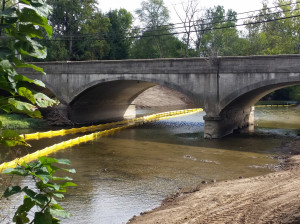 Stormwater management is the one utility challenge that always occurs during periods of weather-related stress. Stormwater impacts are often experienced widely in the community and require immediate attention in many cases. High intensity rainfalls and large snow melts tax the facilities at the same time as the communities are dealing with other related storm problems. In extreme cases flooding threatens the economic viability with costs in the millions of dollars and several years to correct.
Stormwater management is the one utility challenge that always occurs during periods of weather-related stress. Stormwater impacts are often experienced widely in the community and require immediate attention in many cases. High intensity rainfalls and large snow melts tax the facilities at the same time as the communities are dealing with other related storm problems. In extreme cases flooding threatens the economic viability with costs in the millions of dollars and several years to correct.
Whitaker Engineering uses its stormwater experience, field assessments, and hydraulic modeling to quantify the magnitude of the problem and develop corrective options. The client is able to determine the most cost-effective solution to mitigate or remove the stormwater problem. Sometimes a phased solution with multiple projects is the best approach to solving a difficult stormwater issue. Solutions can include rehabilitated and new pipes, improved ditches, and potential regional retention facilities.
Whitaker Engineering encourages its clients to combine stormwater master planning with a capital improvements plan to guide the community in addressing its stormwater issues. First, the community can develop budgets and funding plans to implement its strategy.
Second, the capital improvements plan builds community support for user fees and charges to finally address the stormwater problems that have plagued the community for years. Stormwater utility user fees are a relatively new phenomenon and often encounter public opposition. However, public support will increase when reduced flooding or improved water quality are clear outcomes for the public.
Many communities have experienced increased flooding along rivers, streams, and creeks which pass their community. In some cases the flooding has been catastrophic. FEMA flood maps which predict the limits of flooding for different storm events have come under increased scrutiny and revision. Updated flood mapping can be an asset for stormwater planning, but only if it accurately reflects historical data. Sometimes the hydraulic models used to create the new FEMA flood maps do not match historical data or use assumptions that are too conservative, impacting the community in negative ways.
